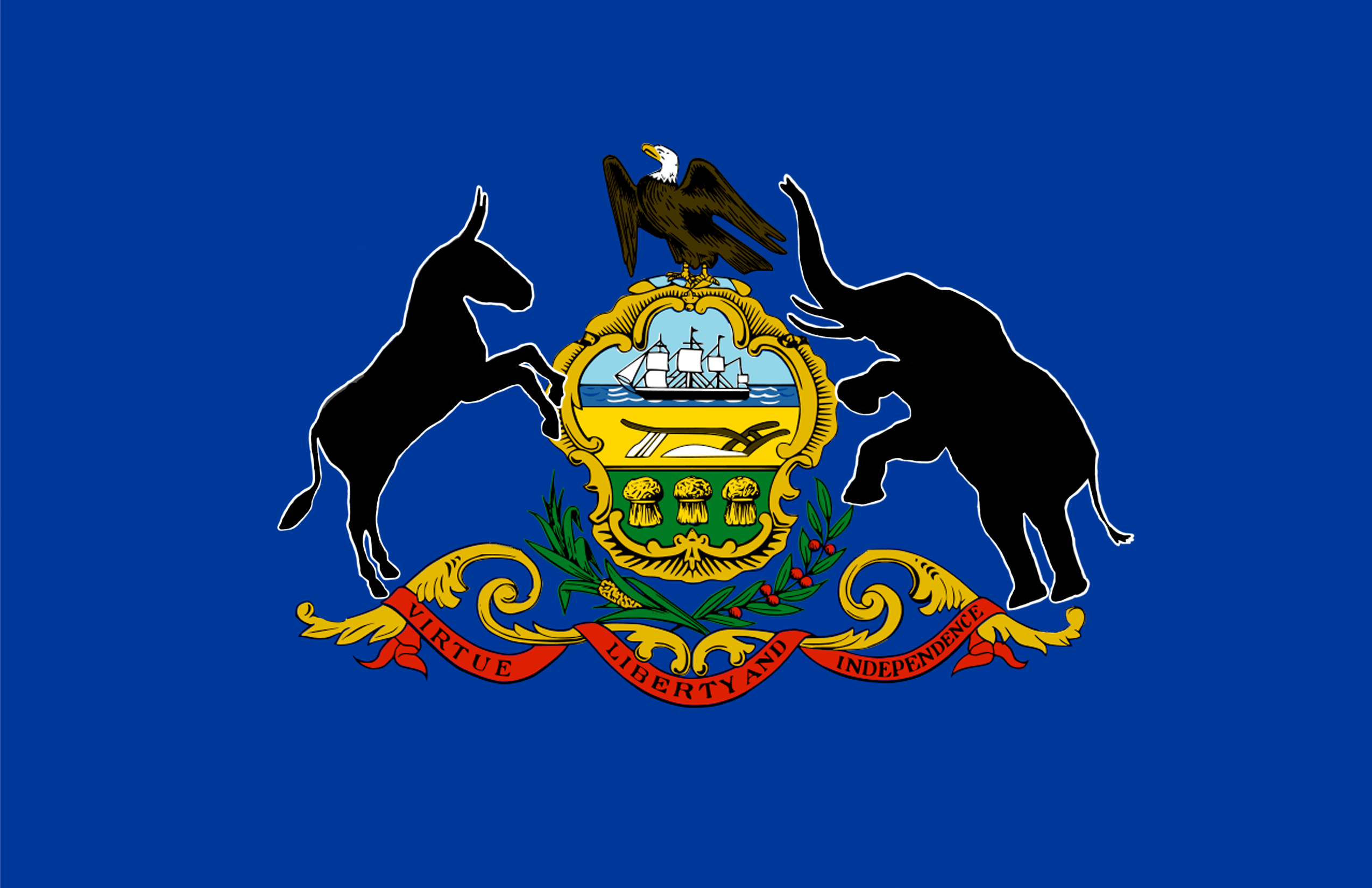Last October, Senator Pat Toomey (R-PA) announced that he would not be seeking re-election at the end of his term in 2022. Now an open seat, Democrats and Republicans alike have turned their focus to the Pennsylvania Senate race—and given the chamber’s current fifty-fifty split, whichever party manages to secure this coveted seat could make or break the future of Biden’s legislative agenda.
Not only is Pennsylvania one of the most “purple” states in the nation, with a Democratic governor, a senator from each party, and a Republican majority in the General Assembly, but this notorious battleground state is the perfect microcosm of our national politics.
The factors driving national political polarization, and the resulting intra party divisions, are acutely present within Pennsylvania’s borders. Within Pennsylvania and the nation alike, urban areas are growing more populous and increasingly diverse. Rural communities are mostly white and losing members. As a result, the growing geographical and cultural divisions between rural and urban Pennsylvanians threatens to drive political polarization to unprecedented levels: Philadelphia, Pittsburgh, and their surrounding suburbs are trending increasingly progressive with each passing election, while most of the state’s rural counties have become Republican strongholds over just the last few cycles. With national patterns mirroring these trends, it appears that understanding Pennsylvania–along with its bloody Senate primaries–could be the key to understanding our divided nation.
Of Pennsylvania’s 67 counties, 48 are classified as rural by the Center for Rural Pennsylvania, with population densities of less than 248 people per square mile. Only two rural Pennsylvania counties voted for President Biden in 2020. In fact, despite winning the popular vote by over 80,000 votes, Joe Biden won just 13 counties overall, including nine of the ten most densely populated regions in the state.
“We often talk about the sorting of America, and how we tend to now congregate even more amongst those like us,” Chris Borick, Muhlenberg College professor and Pennsylvania polling expert told the Philadelphia Inquirer in 2019. As Borick suggests, Pennsylvania’s voting record shows a clear pattern: rural areas are getting redder, while urban areas are getting even bluer.
Only about 27 percent percent of the state’s 12.7 million residents live in one of these rural counties. According to US Census data, Pennsylvania’s population increased by 300,000 people over the last decade, but this growth was disproportionately concentrated in Philadelphia, Pittsburgh, and the surrounding suburbs. On the other hand, the populations of rural counties have dwindled, with Susquehanna, Cameron, and Forest Counties losing 11.4 percent, 10.6 percent, and 9.6 percent of their respective constituencies over just the last 10 years. This demographic divide extends to race as well: 55 percent of Philadelphians are nonwhite, compared to just 18 percent of the population statewide.
This geographic sorting is one the main drivers of partisan polarization. Despite Democrats’ growing advantage statewide, on the county level, the Republican vote share in rural districts continues to increase as more and more progressives flood to urban areas. And as districts become more homogenous, candidates are no longer incentivized to persuade potential swing voters. Instead, candidates are forced to cast their nets deeper, not wider, to turn out the most ideologically animated partisans. For Republicans running in these solidly red districts, this means playing to the Trumpist base.
To this extent, in the crowded Republican primary field, candidates are split along a key ideological line: whether or not they accept the 2020 election results. In September, Army veteran Sean Parnell narrowly beat out Montgomery County real estate developer Jeff Bartos for Trump’s endorsement. Both of these Trump-like conservatives were strong proponents of Pennsylvania’s recent 2020 election audit. But with candidates like Craig Snyder attempting to represent the party’s more moderate faction, the Republican candidate in the general election could be an accurate predictor of where the entire GOP is headed in the post Trump era.
Disheartened by the 2016 election, suburban Pennsylvania women disproportionately turned out to support Democrats in the 2018 midterm elections. This “blue wave” has inspired a new class of liberal suburban women to get involved in local politics, and in some cases, even run for office. And as the party grows increasingly frustrated by the Trumpist minority, Democrats have naturally responded by shifting to the left in arenas where they do have political power. For instance, in last spring’s Pittsburgh mayoral primary, progressive outsider Ed Gainey mounted a successful challenge against incumbent Bill Peduto.
This intra-party debate is on full display within the Democratic primary, with moderates and progressives each presenting their own strategy to avoid a Trumpist resurgence. John Fetterman, current lieutenant governor and a Bernie Sanders progressive, has argued that his left-wing economic policies could potentially attract Trump’s former populist base and help flip the seat. Moderates like House Representative Conor Lamb, however, worry that progressives’ far-left rhetoric could alienate potential swing voters.
Pennsylvania’s growing rural-urban divide is not only evidence of the mounting cultural divisions within our national politics, but of how geographical sorting can itself push parties further to the extremes. Now only forced to win over a smaller subset of ideologically aligned voters in order to clinch a primary nomination or a house seat in a safe district, leaders in each party have moved further in both directions, inevitably creating conflict with the moderate flank of their respective coalitions. While the fate of Pennsylvania’s Senate race is yet to be determined, whichever way the Keystone State swings in 2022 could not only determine the makeup of the US Senate for the remainder of Biden’s term, but is likely a bellwether for where the United States is headed politically in the years to come.
